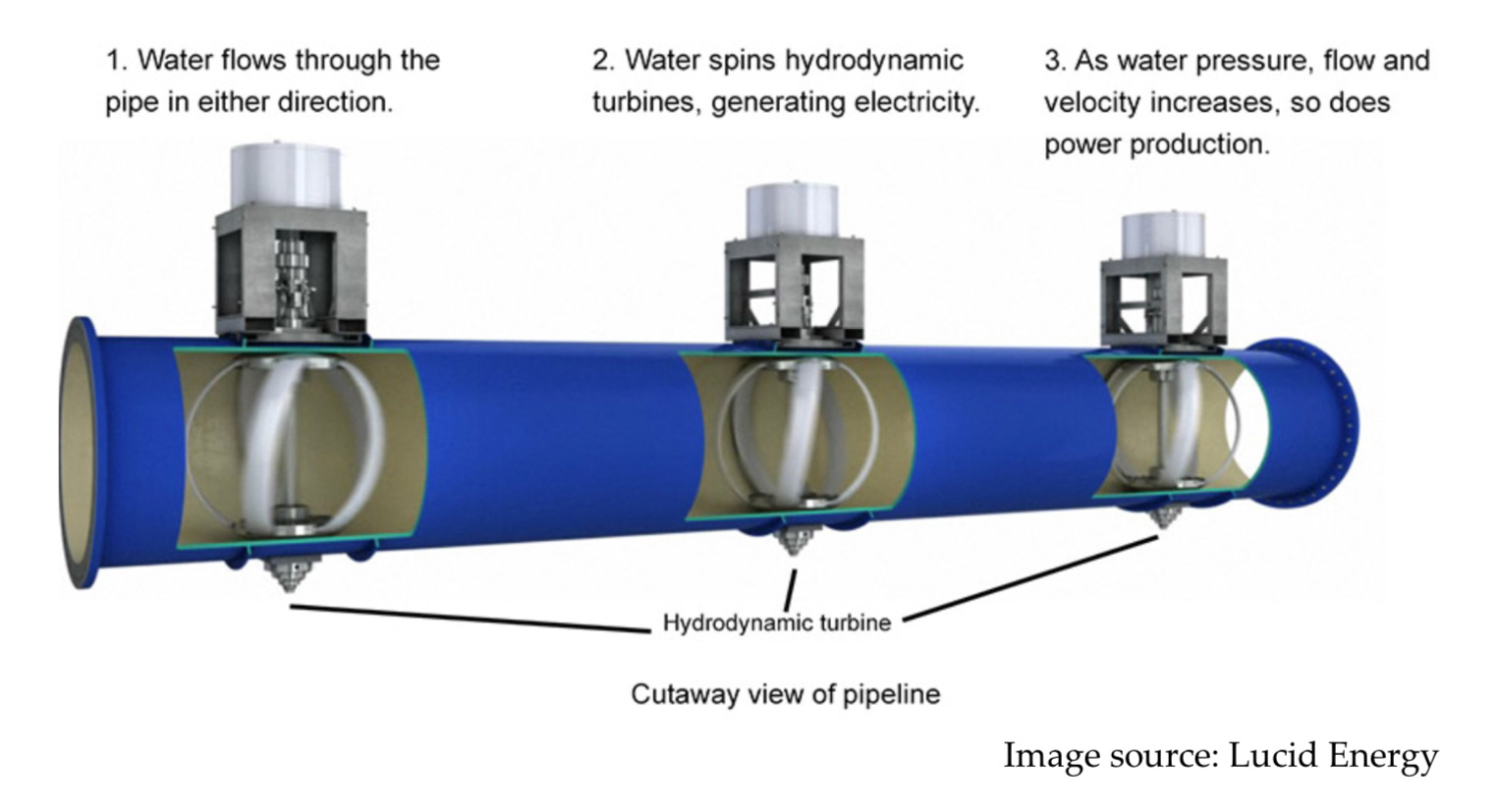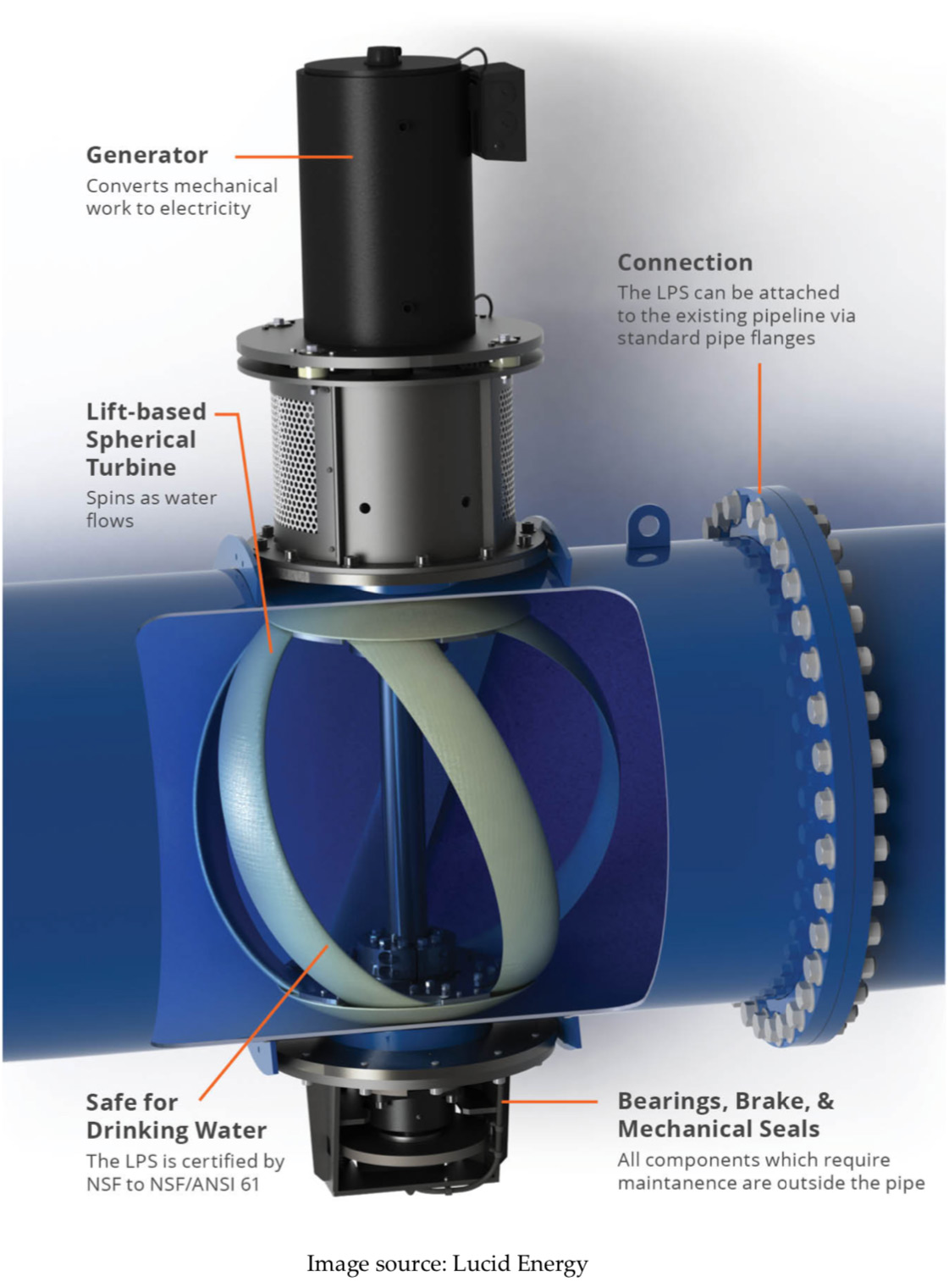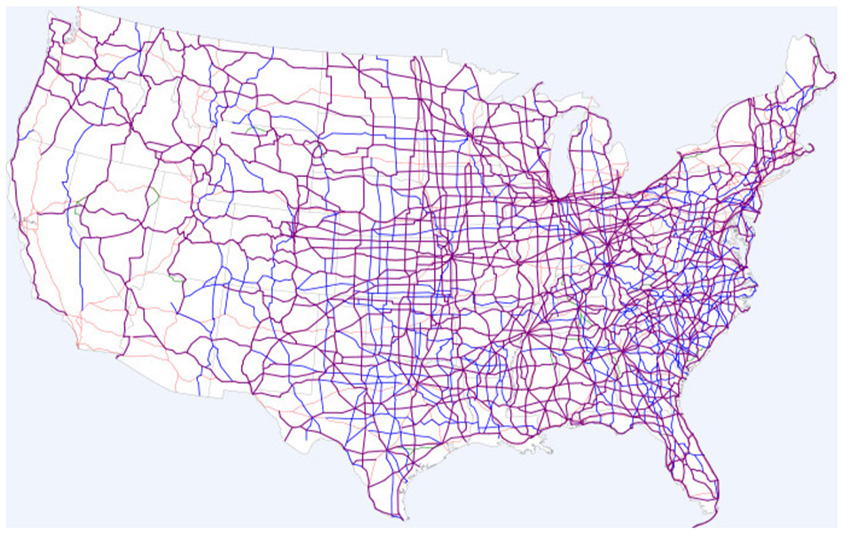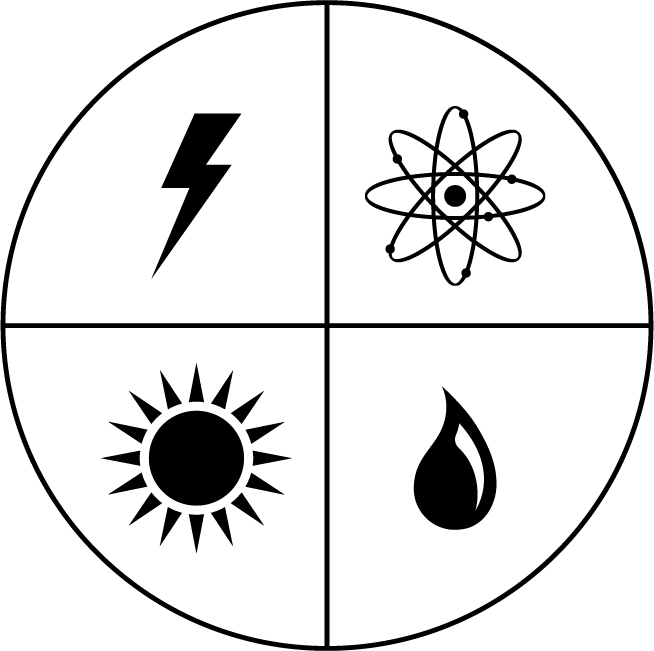Internal hydroelectric power. As a part of the energy-generating capabilities of the National Aqueduct, the water pipes themselves could be fitted with internal turbines to generate electricity from the water flow. Hydroelectricity is highly effective as a power source, and by miniaturizing turbines within prefabricated pipeline arrays, nearly every aspect of the water transmission process can be harnessed as power.
A company named Lucid Energy in Oregon is already doing this today through modular turbine assemblies installed within prefabricated water pipes.[4]


Using a similar approach, the National Aqueduct would generate electricity 24 hours a day, 7 days a week by virtue of its primary function: transporting water over thousands of miles. Yet unlike other hydroelectric power stations, like the Hoover Dam on the rapidly-depleting Lake Meade,[5] this method is environmentally friendly and highly reliable.
Hydrothermal power. As water has one of the highest specific heats in nature, once it gets hot, it stays hot for a long time.[6] At the scale of billions of gallons, water stays hot for an extremely long time – days, even weeks – all the more so if the storage mediums are well-insulated.
One of the key functions of a CHP Plant is to keep water hot when it comes from a Multistage Flash Distillation Facility, and in turn pump it into the National Aqueduct hot. But as it travels over distance, the water will eventually cool.
To address this problem, we’ll need to rely on the National Aqueduct’s energy-generating features. By using the excess energy generated by pipeline-mounted solar arrays, wind turbines, and internal pipe turbines, we’ll have the energy necessary to keep water hot throughout the entire Aqueduct. This is beneficial for three important reasons:
First, water will reach its destination hot, sparing the energy needed to heat it within residential and commercial hot water heaters. By virtue of the Aqueduct’s control component, not all water would necessarily be delivered to residences at high temperature, but it can arrive hot at any given time. This gives municipal managers more flexibility in how they route water, as well as save significant sums of money and energy on heating costs.
Second, keeping the water hot prevents it from freezing in pipelines during winter months. Although the pipes would be insulated and resilient, a residual amount of heat could be constantly emitted to melt snow covering solar panels, allowing for electricity generation year-round.
Third, if the entire Aqueduct were heated, it would store a tremendous amount of potential energy that could be converted into electricity,[7] allowing it to functionally act as a battery – the world’s largest by far.
Several companies – such as Marlow Engineering’s models in the images below – make thermoelectric generators designed specifically to be placed over hot pipelines,[8] which can be placed in arrays up to three-wide. If installed throughout the entire system, they could generate immense power from such a large volume of hot water.[9]

Let’s say, for example, that we’ll store 500 billion gallons throughout the National Aqueduct, and let’s say we heat that water to 200o F to maximize potential energy storage. Using the worksheets provided by the helpful folks over at Engineering Toolbox,[10] we'll conclude that 1 gallon of water at 200 oF contains 1,660 BTU of energy. Across 500 billion gallons, that comes to 830 trillion BTU, or 875.7 billion megajoules.
Converted into electricity, that's equivalent to 243 billion kilowatt-hours of potential energy from hot water alone.
Combined with the hydroelectric and solar functions of water pipeline arrays, it’s feasible for the National Aqueduct to store enough potential energy to generate trillions of kilowatt-hours over time. To put that in the proper scale, take another look at the nationwide road map we saw earlier:

If each one of these highway lines represented arrays of water transmission pipelines with solar functionality, hydroelectric functionality, and hydrothermal functionality, we’d be generating a level of energy that words don’t give justice to, particularly when combined with Liquid Fluoride Thorium Reactors, CHP Plants, and municipally integrated renewables. As adoption of Scarcity Zero's technologies spreads, the multiplier effect accelerates until we're well beyond the energy targets needed to support our way of life, with each step beyond that concordantly reaching a subsequent tier.
With the National Aqueduct implemented alongside integrated municipal renewables and CHP Plants, we have electricity, water, and fuel at our fingertips in indefinite abundance. That, once achieved, empowers us to evolve beyond the concepts of drought, water scarcity, and water-borne disease. And from there, we can do the same to famine.
Because as we can use effectively unlimited electricity to produce unlimited water and unlimited fuel, we can then use all three to produce unlimited food.
